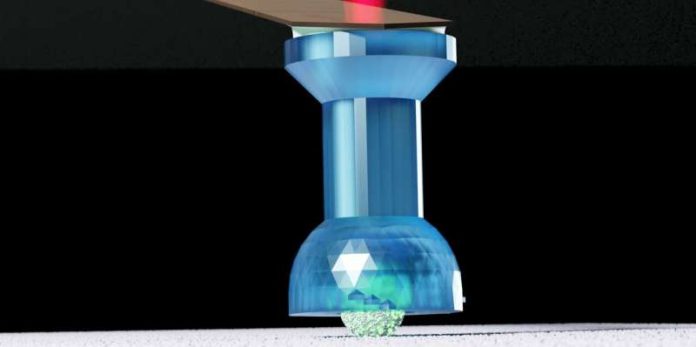
From ketchup and paint to concrete and orange juice, many everyday materials are what scientists call suspensions—liquids that contain tiny solid particles floating inside.
These suspensions are everywhere, not only in homes but also in industries like construction and electronics.
But when there are a lot of particles in a suspension, the way the liquid flows can become strange and unpredictable.
Normally, we expect a liquid to become thinner when stirred quickly, but some suspensions do the opposite—they suddenly get thick and behave like a solid.
This strange behavior is caused by how the tiny particles inside interact with each other.
When the suspension is forced to move or is pressed, the particles need to rearrange themselves. If they can roll past each other easily, the liquid stays smooth and flows well.
But if they get jammed and have to slide, it takes much more force, and the liquid suddenly becomes thicker.
To better understand this, scientists at ETH Zurich, led by Professor Lucio Isa, created a new method to measure the tiny friction forces between individual particles.
Doctoral student Simon Scherrer helped design a microscopic tool using an atomic force microscope, which allowed them to trap and move a single particle across a surface made of the same material.
This setup allowed them to mimic how two particles move past each other and measure the rolling and sliding forces involved.
The particles they tested were extremely small—just 12 micrometers wide, about one-fifth the width of a human hair.
Making a holder small enough to hold just one particle was a big challenge. Scherrer said he had to try about 50 different designs before finding one that worked.
They tested particles with different surface textures. Smooth or slippery particles didn’t roll—they just slid across each other, even under pressure.
But rough or slightly sticky particles acted like gears, catching on each other and rolling more easily with much less force.
The scientists also measured how much force was needed when particles had to slide instead of roll, and they found sliding required far more effort.
These measurements gave the researchers important numbers—rolling and sliding friction values—that can now be used in computer models. With these models, engineers can design suspensions that flow more smoothly and predictably.
This discovery could help industries that rely on suspensions, like the concrete industry or electronics manufacturers that use thick, particle-filled pastes for building circuit boards. If the paste becomes too thick under pressure, it can clog the nozzles used to apply it.
Understanding particle behavior on the microscopic level could help prevent such problems.
By learning how particles roll and slide, scientists are paving the way for smoother, smarter materials in everything from construction to condiments.



